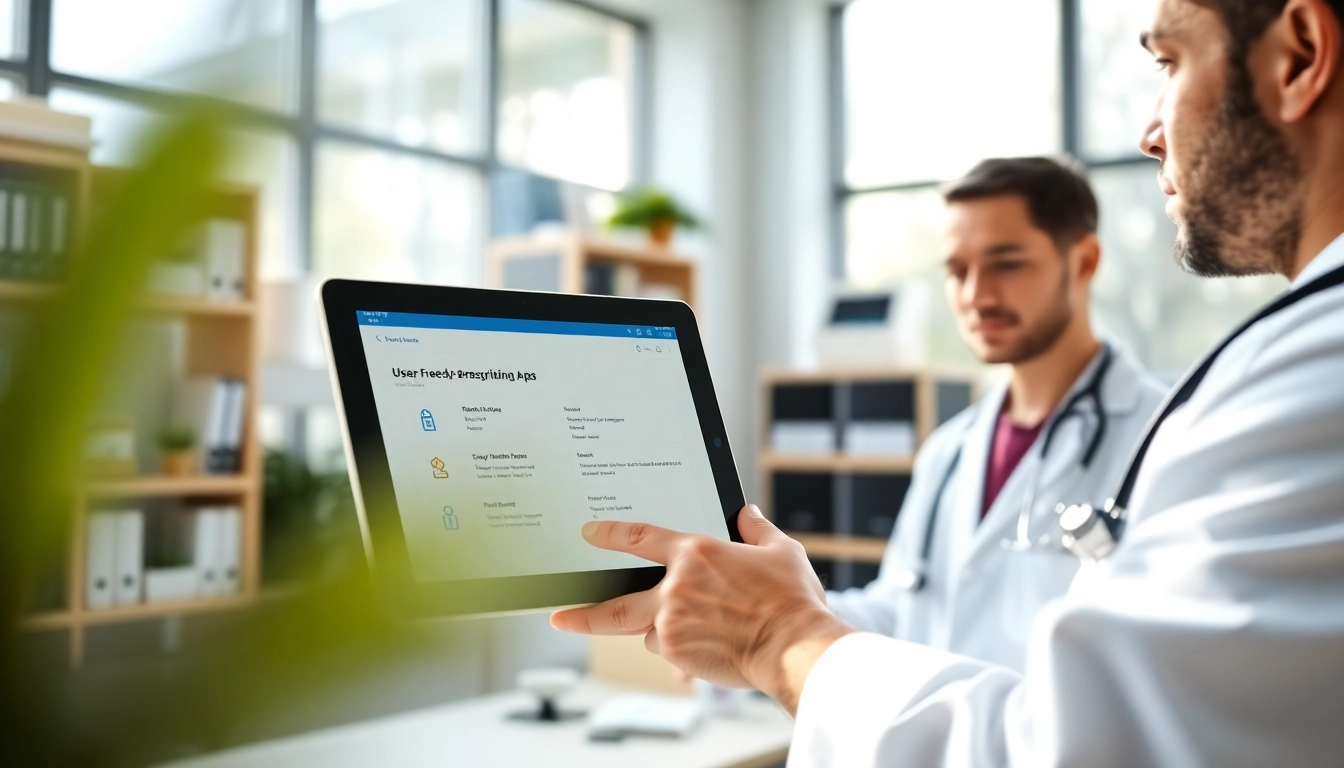Understanding Eprescribing Software for Doctors
In the modern healthcare landscape, technology continues to revolutionize how healthcare providers operate. One significant advancement is eprescribing software for doctors, which streamlines the prescription process and enhances patient safety. This article explores the features, benefits, and best practices associated with e-prescribing, ensuring that healthcare professionals can make informed decisions regarding their digital tools.
What is Eprescribing Software?
Eprescribing software, or electronic prescribing software, allows physicians to write and send prescriptions to pharmacies electronically. This digital method of prescribing alleviates common issues associated with traditional methods, such as illegible handwriting and lost paperwork. By using e-prescribing systems, providers can enhance efficiency, reduce errors, and deliver better patient care.
Key Features of Eprescribing Software for Doctors
Understanding the key features of e-prescribing software helps physicians select the best solution for their practices. Here are some essential functionalities:
- Electronic Order Transmission: Enables direct delivery of prescriptions to pharmacies, reducing wait times for patients.
- Drug Interaction Alerts: Provides warnings about potential drug-drug interactions as prescriptions are being written, enhancing patient safety.
- Medication History: Offers access to a patient’s full medication history, allowing doctors to make informed prescribing decisions.
- User-Friendly Interface: Designed to streamline the prescribing process, minimizing the learning curve for physicians and staff.
- Integration with EHR Systems: Facilitates seamless communication between electronic health records and prescribing systems for more efficient workflows.
Benefits of Eprescribing Software Implementation
The implementation of e-prescribing software offers numerous benefits for healthcare practices. Here are some of the most significant advantages:
- Improved Accuracy: Reduces errors associated with handwritten prescriptions, including misinterpretations and lost prescriptions.
- Increased Efficiency: Streamlines the prescription process, allowing physicians to spend more time with patients rather than paperwork.
- Enhanced Patient Satisfaction: Patients receive their medications more swiftly, resulting in a better overall experience.
- Cost Savings: Minimizes administrative costs by reducing the need for phone calls and faxing prescriptions to pharmacies.
- Regulatory Compliance: Many systems ensure compliance with state and federal regulations, reducing legal risks for healthcare providers.
Choosing the Right Eprescribing Software for Doctors
Selecting the right e-prescribing software is crucial for maximizing its benefits. Here are important criteria to consider:
Criterias for Selection
When exploring different e-prescribing platforms, doctors should evaluate them based on several criteria:
- User Experience: Assess whether the software is intuitive and easy to navigate for staff and physicians alike.
- Integration Capabilities: Inquire about how well the software integrates with existing systems, such as EHRs and billing systems.
- Support Services: Consider the quality of customer support provided, including training and troubleshooting assistance.
- Scalability: Evaluate the software’s ability to grow with your practice as patient volume increases.
- Security Features: Ensure that the software complies with HIPAA regulations and employs robust security measures to protect patient data.
Understanding Pricing Models
Pricing models for e-prescribing software can vary widely, typically based on subscription fees, per-prescription charges, or even one-time licensing fees. Understanding the various pricing structures can help practices budget accordingly and avoid unexpected costs:
- Subscription Model: A monthly or annual fee that grants access to the software.
- Pay-per-Prescription: Charges incurred only when a prescription is sent electronically.
- One-Time Purchase: A lump-sum payment for a perpetual license; additional fees may be incurred for support and updates.
Reading User Reviews and Testimonials
User reviews can provide valuable insights into the real-world functionality of e-prescribing software. When evaluating potential systems:
- Look for feedback that highlights common issues or praised features.
- Seek testimonials from practices similar to yours to assess compatibility.
- Consider online forums and software review sites to gather diverse perspectives.
Best Practices for Using Eprescribing Software for Doctors
Implementing e-prescribing software is just the beginning; proper usage and optimization are key to reaping its full benefits. Here are best practices for ensuring effective use:
Training Staff on Eprescribing Systems
Proper training is vital to ensure that all staff members are proficient in using the e-prescribing software:
- Comprehensive Training Programs: Organize training sessions and provide resources to familiarize the team with the software’s features.
- Ongoing Education: Offer continuous learning opportunities as updates and new features are integrated into the system.
- Role-Specific Training: Tailor training programs to suit the specific roles of each staff member for a more personalized approach.
Integrating Eprescribing with Existing Systems
Integration with existing practice management and electronic health record (EHR) systems is critical:
- Data Synchronization: Ensure that patient records, medications, and prescription histories smoothly sync across platforms.
- Streamlined Workflows: Work with IT professionals to confirm that the e-prescribing system complements current workflows instead of disrupting them.
Ensuring Compliance with Regulations
Staying compliant with regulations is paramount for all medical practices:
- HIPAA Compliance: Verify that the software adheres to HIPAA regulations concerning patient data security and privacy.
- Regular Audits: Conduct routine audits to ensure continued compliance and identify areas for improvement.
- State Regulations: Familiarize yourself with specific state laws regarding e-prescribing, as they may vary nationwide.
Common Challenges in Eprescribing and Solutions
While e-prescribing software provides notable advantages, challenges can arise. Here’s how to address them:
Dealing with System Failures
System failures can be problematic but can be managed effectively:
- Backup Systems: Implement automated backup procedures to safeguard patient data in case of system outages.
- Redundancy Plans: Develop procedures for switching to manual prescribing methods when digital options fail.
Managing Prescription Errors
Errors can occur due to various factors, but they can be mitigated:
- Alerts and Reminders: Utilize software features that alert providers of potential risks, including allergies and interactions.
- Clear Communication: Establish protocols for effectively communicating with pharmacies and patients to resolve discrepancies.
Addressing Patient Concerns
Patients may have concerns regarding e-prescribing, and addressing them promptly is key:
- Education: Provide patients with information about how e-prescribing works, addressing privacy and security points.
- Engagement: Encourage patients to ask questions and express any concerns they may have about their prescriptions.
Measuring the Impact of Eprescribing Software for Doctors
To gauge the effectiveness of e-prescribing software, practices should track key performance metrics. Here are critical areas to monitor:
Tracking Prescription Turnaround Time
Measuring the time taken from prescription creation to patient receipt provides insight into efficiency:
- Benchmarking: Set benchmarks for expected turnaround times and monitor compliance.
- Analysis Tools: Utilize software analytics to identify bottlenecks in the prescription fulfillment process.
Assessing Patient Satisfaction Levels
Patient feedback can provide valuable insights into the impact of e-prescribing:
- Surveys: Implement patient satisfaction surveys to gather feedback on their experiences with prescriptions.
- Follow-Up Communications: Foster continuous engagement with patients post-prescription to gauge their satisfaction further.
Improving Practice Efficiency Metrics
Watching metrics related to overall practice efficiency can highlight the usability of e-prescribing software:
- Time Management: Assess the metrics related to time saved in documentation and prescription writing.
- Cost Analysis: Monitor changes in costs related to prescription management and analyze improvements over time.



